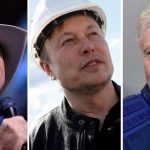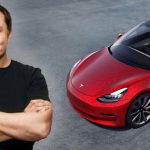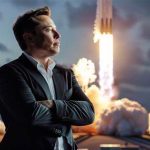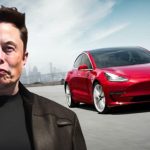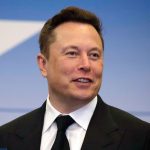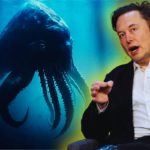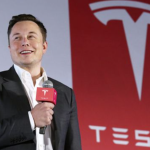Elon Musk and the Technological Race with Jeff Bezos: Analyzing the Relentless Competition in Space Technology
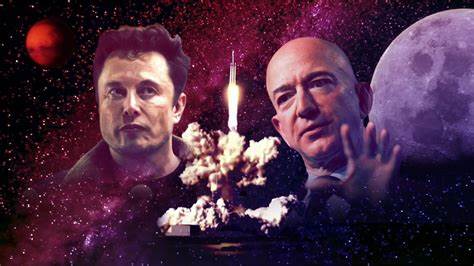
Elon Musk and the Technological Race with Jeff Bezos: Analyzing the Relentless Competition in Space Technology 🚀
Elon Musk and Jeff Bezos—two of the planet’s most formidable tech billionaires—are locked in a rivalry that transcends mere wealth, spilling into a high-octane race to shape humanity’s destiny through space technology. With Musk’s SpaceX and Bezos’s Blue Origin, they’ve transformed the cosmos into a battleground where innovation, ambition, and personal vendettas collide at warp speed. As of March 31, 2025, this competition isn’t just about who can launch a rocket or plant a flag on Mars—it’s a bare-knuckled fight for supremacy in the booming commercial space industry, a sector projected to hit $1 trillion by 2040. Their duel pits Musk’s relentless, Mars-driven audacity against Bezos’s methodical, Earth-preserving vision, redefining what’s possible among the stars. Here’s a detailed breakdown of their unrelenting showdown.
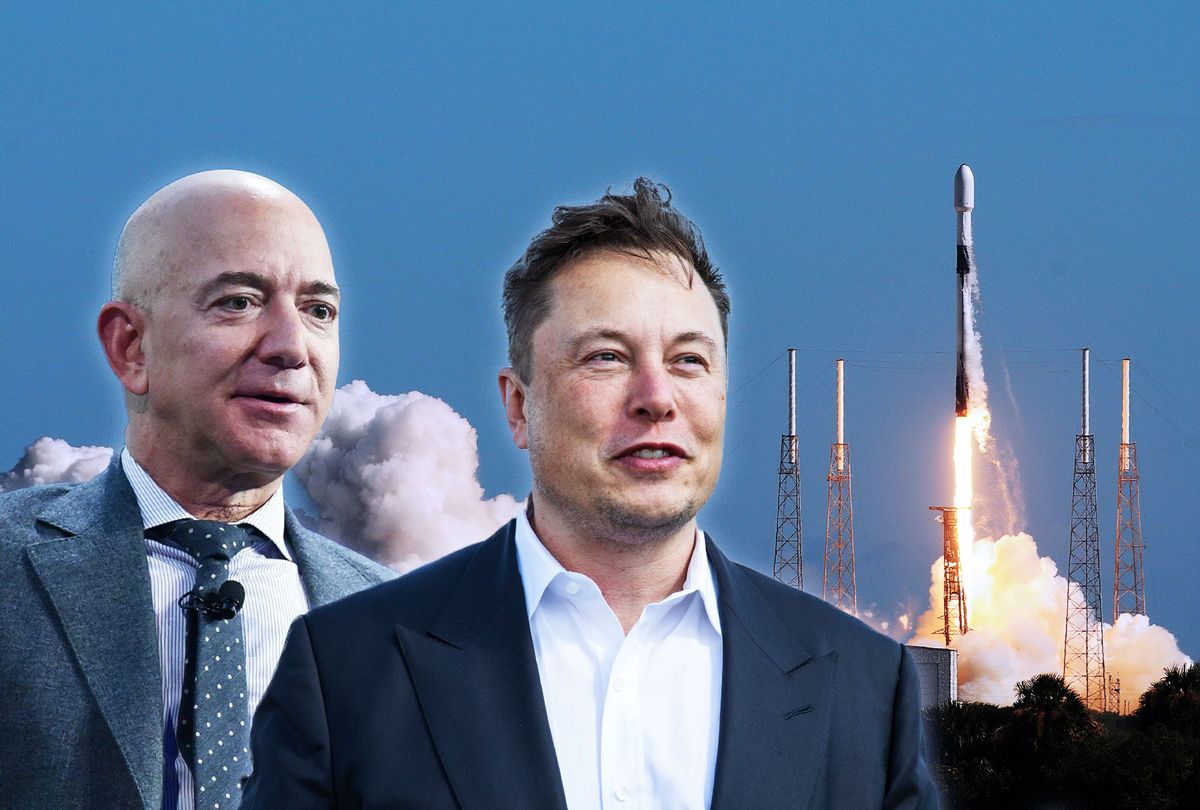
Origins and Contrasting Visions 🌌
The roots of this rivalry trace back to the early 2000s, when both men, flush with dot-com fortunes, turned their gaze skyward. Their visions, however, diverge like orbits around different planets.
- Elon Musk and SpaceX: Musk founded SpaceX in 2002, seeding it with $100 million from his PayPal windfall. His mission? To make humans a multi-planetary species, with Mars as the cornerstone—a “Plan B” for Earth’s potential collapse. “I want to die on Mars, just not on impact,” he quipped at a 2012 conference, encapsulating his blend of humor and resolve. SpaceX’s strategy hinges on slashing costs through reusable rockets, aiming to ferry colonists to the Red Planet by 2029. It’s a vision born from Musk’s sci-fi-soaked youth and a belief that humanity’s survival demands cosmic expansion.
- Jeff Bezos and Blue Origin: Bezos launched Blue Origin in 2000, two years before SpaceX, fueled by a childhood obsession with space kindled by Star Trek and Apollo. His dream isn’t Mars—it’s “millions living and working in space” via orbiting colonies and infrastructure, preserving Earth as a pristine habitat. “We need to save Earth by moving industry into space,” he told 60 Minutes in 2019. Blue Origin focuses on building the tools—rockets, habitats—to enable this exodus, a slower-burn ambition rooted in sustainability over colonization.
Their origins set the stage: Musk’s urgency versus Bezos’s patience, Mars versus orbiting O’Neill cylinders. Both see space as humanity’s future, but their paths—and pace—couldn’t differ more.
Key Milestones and Head-to-Head Achievements 🌠
This rivalry isn’t abstract—it’s measured in launches, landings, and lunar contracts. Here’s how they stack up.
- Reusable Rockets – Who Did It First?
- SpaceX: The Falcon 9’s first successful landing on December 21, 2015, was a seismic shift—rockets could return, refuel, and relaunch. By 2025, SpaceX has notched over 300 landings, driving costs from $20,000/kg to orbit down to $2,000/kg. In 2024 alone, it launched 134 times, cementing its dominance. Musk’s X post that night—“Welcome to the reusable era”—wasn’t just bravado; it was prophecy.
- Blue Origin: New Shepard beat Falcon 9 to the punch, landing on November 23, 2015, after a suborbital hop. Bezos crowed on X, “Welcome to the club!”—a jab at Musk’s hype. Musk retorted, “We’ve been planning orbital reusability since 2012—suborbital’s a different game.” He was right: New Shepard’s tourist jaunts pale next to Falcon 9’s orbital workhorse status. By 2025, Blue Origin’s suborbital tally sits at 25 flights—impressive, but not game-changing.
- Orbital Ambitions – Scale and Speed
- SpaceX: Falcon 9’s orbital prowess birthed Crew Dragon, which in 2020 ended NASA’s reliance on Russia’s Soyuz for astronaut transport—a geopolitical win. Starlink, with over 6,000 satellites by 2025, serves 4 million users, generating $150 billion in valuation and funding Starship’s Mars push. Starship’s late-2024 orbital success, after explosive tests, targets a 2029 crewed Mars landing. SpaceX’s $350 billion valuation reflects its breakneck momentum.
- Blue Origin: New Glenn, a heavy-lift rival to Falcon 9, finally reached orbit in January 2025 after years of delays—originally slated for 2020. Its 45-ton payload capacity is robust, but trails Starship’s 150 tons. New Shepard’s suborbital tourism, including Bezos’s 2021 flight, lags behind SpaceX’s orbital Inspiration4 (2021), the first all-civilian orbital mission. Blue Origin’s $10 billion valuation underscores its slower ascent.
- NASA Contracts – The Lunar Showdown
- SpaceX: In 2021, SpaceX snagged a $2.9 billion NASA contract to land astronauts on the moon via Starship for Artemis III (slated for 2026). Bezos’s Blue Origin sued, alleging favoritism, but the Government Accountability Office and courts upheld SpaceX’s win—a stinging defeat for Bezos. Starship’s lunar role cements Musk’s lead.
- Blue Origin: Teaming with Lockheed Martin and Northrop Grumman, Blue Origin lost the 2021 lunar lander bid. Bezos offered NASA $2 billion to reconsider, framing it as a patriotic discount; NASA declined. A 2023 consolation prize—$3.4 billion for Artemis V (2029)—keeps Blue Origin in the game, but its Orbital Reef station (with Sierra Space) remains a blueprint, not hardware, trailing SpaceX’s operational edge.
Tech and Strategy Face-Off 🔥
Their technological arsenals and approaches reveal stark contrasts—speed versus precision, chaos versus control.
- SpaceX’s Edge: Musk’s “fail fast, iterate” mantra—exemplified by Starship’s fiery test failures—delivers results. Vertical integration (90% in-house production) cuts costs and speeds timelines, while $17 billion in NASA contracts since 2006 fuel growth. Starship’s 150-ton payload dwarfs New Glenn’s 45 tons, targeting Mars, not just low Earth orbit (LEO). Musk’s hands-on style—he codes, sleeps at Starbase—drives a frenetic pace.
- Blue Origin’s Play: Bezos opts for a deliberate, “gradatim ferociter” (step-by-step, fiercely) approach. New Glenn’s reusable first stage apes Falcon 9 but emphasizes precision—its January 2025 booster landing attempt failed, but lessons are being applied for a spring retry. Suborbital tourism and lunar ambitions lean on partnerships (e.g., Amazon’s Project Kuiper), less aggressive than Musk’s all-in gambles. Bezos delegates to CEO Dave Limp, balancing space with other pursuits.
- Personal Stakes: Musk sank $100 million into SpaceX, living its highs and lows—near bankruptcy in 2008, triumphant landings by 2015. Bezos funds Blue Origin with $1 billion annual Amazon stock sales, a steady drip versus Musk’s early plunge. Musk’s Starbase bunk contrasts with Bezos’s yacht voyages, reflecting their differing intensities.
Public Spats and Brand Clashes 🌩️
This isn’t a quiet rivalry—it’s a public brawl, amplified by X and legal salvos.
- Twitter Taunts: Musk’s X barbs—like a 2021 silver-medal emoji when he overtook Bezos as the world’s richest—keep the feud spicy. Post-New Shepard, Bezos countered, “SpaceX isn’t the only game in town,” but Musk’s riposte—“They’ll get to orbit when I’m old”—stung. In 2025, Musk tweeted, “Godspeed!” for New Glenn’s launch, a rare nod amid the snark.
- Lawsuits and Lobbying: The 2021 NASA lawsuit was a flashpoint—Blue Origin’s 50-page protest claimed bias; SpaceX dismissed it as sour grapes. SpaceX has countersued over launch rights, while Blue Origin’s 2024 FAA filing sought to cap SpaceX’s Starship launches at Kennedy Space Center, citing environmental risks. Musk jeered on X, “Sue Origin strikes again!” Their legal jousting doubles as brand warfare, each vying for public and policy favor.
Impact on Their Empires and the Industry 🌍
This duel isn’t just personal—it’s reshaping their empires and the space sector.
- SpaceX Soars: With 300+ launches by 2025, SpaceX is the private space king—80% of Earth’s orbital payload last year was theirs. Starlink’s $150 billion valuation bankrolls Starship, while Musk’s Mars obsession pressures NASA (Artemis relies on him) and rivals to accelerate. His lead is near-unassailable.
- Blue Origin Lags: New Glenn’s orbit debut and 20+ New Shepard flights are wins, but they’re footnotes to SpaceX’s dominance. Tourism and lunar bids keep Blue Origin afloat—Project Kuiper’s 3,200 satellites, launching in 2025, aim to dent Starlink—but its $10 billion valuation trails SpaceX’s by a galactic margin.
- Industry Shift: Their race has slashed costs—reusability is now industry standard, dropping launch prices tenfold since 2010. It’s sparked a commercial boom: Rocket Lab, Astra, and China’s iSpace chase the pace, while space tourism (Virgin Galactic) and satellite webs owe their rise to this rivalry. NASA’s pivot to private partners—$6 billion in Artemis contracts—owes much to their push.
The Musk-Bezos Dynamic 🌟
Musk and Bezos aren’t just racing—they’re redefining space’s frontier. Musk’s breakneck, Mars-or-bust style—fueled by explosive tests and all-nighters—clashes with Bezos’s steady, Earth-centric buildout, paced by partnerships and precision. Musk leads in launches (134 vs. New Glenn’s 1 in 2024), valuation ($350 billion vs. $10 billion), and sheer audacity—Starship’s Mars shot looms, while New Glenn eyes LEO and lunar gigs. Bezos counters with patience and prestige, leveraging Amazon’s might and a long-game ethos—New Glenn’s spring 2025 relaunch aims to close the gap.
Their rivalry—stoked by ego, X barbs, and billion-dollar bets—has turned the cosmos into a proving ground. Musk’s taunts and SpaceX’s tempo keep him ahead; Bezos’s resolve and Blue Origin’s late surge keep him in contention. Together, they’ve dragged humanity closer to the stars than ever—SpaceX’s orbital dominance and Blue Origin’s orbital entry mark a new space age. By 2025, Musk’s lead is clear, but Bezos isn’t out. This isn’t just a billionaire brawl—it’s a catalyst, pushing the final frontier into reach, one rocket at a time.
